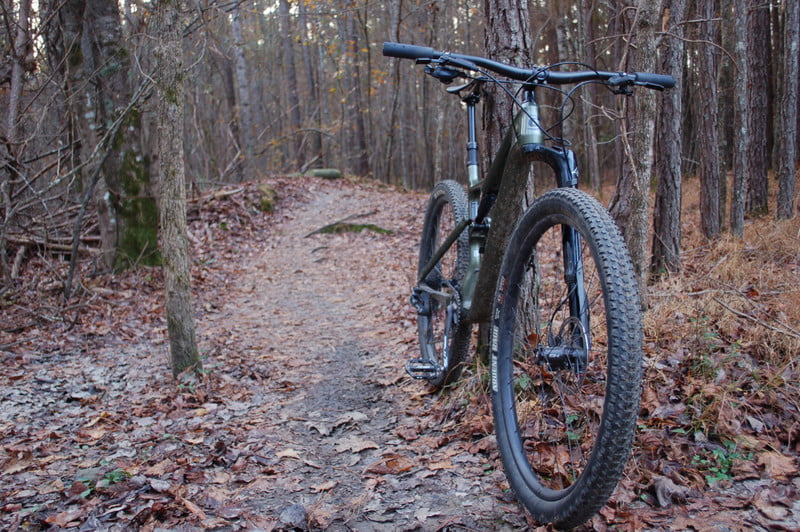
Few bikes get as much respect from the XC crowd as the Cannondale Scalpel. The original Scalpel debuted over a decade ago in 2001 and went on to win countless World Cup titles and Norba Championships. Its trademark single-sided “Lefty” fork is unmistakable for anything else on the market and tells anyone who sees it they’re looking at a dangerously light and fast machine with a rich racing pedigree.
But what happens when you cross the quintessential feather-light and razor-sharp handling XC bike with the go-anywhere, ride-anything DNA of a proper full suspension trail bike? The result is a new genre of the mountain bike, which many are calling a “downcountry” build, which pedals lightning-fast and climbs hills with abandon but isn’t afraid to pop off jumps, fly over drops, or roll through rocky steps or rooty corners on the way down. Cannondale’s long history in the XC racing scene makes them uniquely qualified to submit an entry into this new genre of two-wheeler, and the Scalpel Carbon SE LTD is their absolute cream of the crop.
Testing the Cannondale Scalpel SE Ltd
Needless to say, we were more than excited to take possession of Cannondale’s lightest and fastest down country creation of the year and could think of no better way to put it to the test than a proper tour of all the best mountain biking destinations in Georgia. Here’s what we found after spending a few weeks with the Cannondale Scalpel Carbon SE LTD.
First Impression of the Cannondale Scalpel
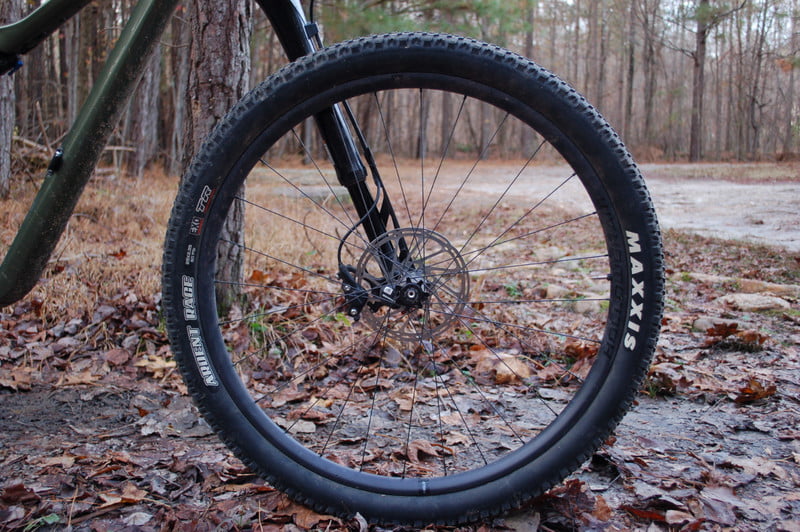
On its face, the Scalpel Carbon SE LTD is a full carbon-fiber trail bike, sporting full suspension front, and rear and fast-rolling 29-inch wheels. The model is offered with both a traditional suspension fork in the form of a Rockshox SID or with Cannondale’s signature single-sided “Lefty Ocho” fork, albeit a much beefier 120mm travel version.
Our test bike sported the Lefty option, which looks as sweet as it rides (more on that below), but other than that, the two are identical. Both bikes share the exact same carbon frame, which comes painted in a handsome high-gloss “Mantis” green color, as well as the same drivetrain, cockpit, wheels, tires, etc.
As you might expect, the Scalpel SE LTD flaunts its XC DNA with an impressively low weight of around 11.6kg for a medium frame. That’s not quite on par with the 10kg-or-less “holy grail” of the most hardcore XC racers out there, but considering the LTD’s trail-savvy intentions, it’s still an incredibly light machine that weighs less than a long list of dedicated XC racers both with and without full suspension.
Cannondale Bike Suspension
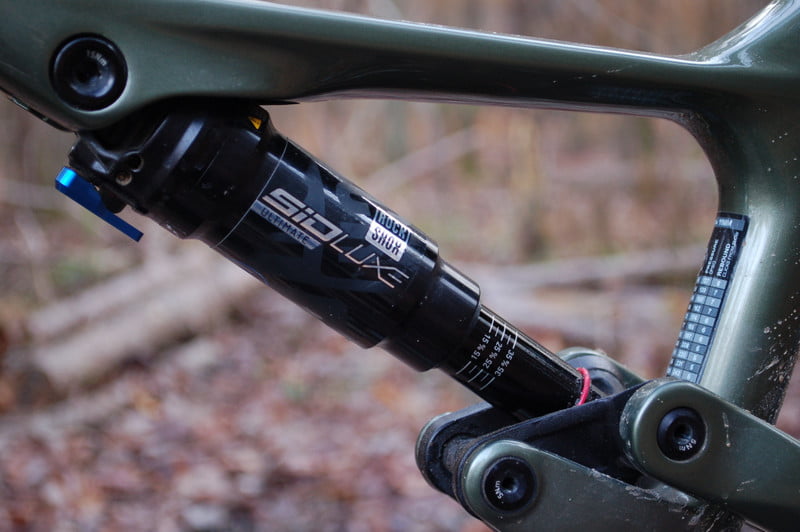
Suspension is the single largest difference between the trail-oriented Scalpel SE models and the standard Scalpel Carbon XC bikes, and the LTD gets an extra 20mm front and rear for 120mm of total travel.
Rear suspension on the Scalpel SE LTD comes from two features: The first is a 120mm Rockshox SIDLuxe Ultimate shock, which has a two-position manual lockout adjustment as well as adjustable rebound. Cannondale chose to forego an on-the-fly rebound adjustment knob to save weight, but the SIDLuxe is still easily adjustable using a 2mm hex key on the underside of the shock. The second component of the Scalpel’s rear suspension is Cannondale’s proprietary “FlexPivot” system, which uses thin and flexible carbon plates in the rear triangle to create a simulated Horst link design that’s much lighter weight than traditional linkage and completely maintenance-free.
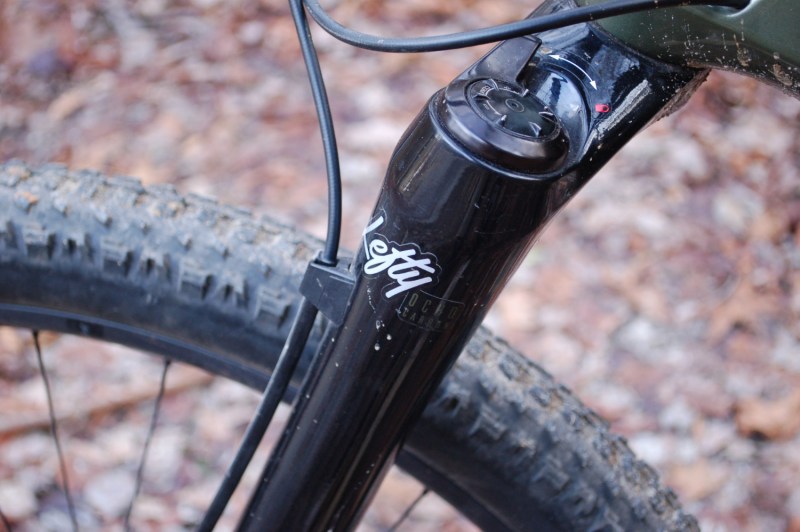
Front squish duty is handled by the aforementioned 120mm Lefty Ocho fork, which packs both a manual lockout lever and compression adjustment knob at the top of the crown, the latter of which provides seven clicks of adjustment that can be easily done with one hand with or without gloves. Rebound adjustments are made by hand on the bottom of the fork, with 22 full clicks of adjustability.
Both front and rear components feature easily accessible air valves to dial in preload, and both include a convenient recommended pressure chart by rider weight for hassle-free setup.
Additional Components of the Cannondale Scalpel SE Ltd
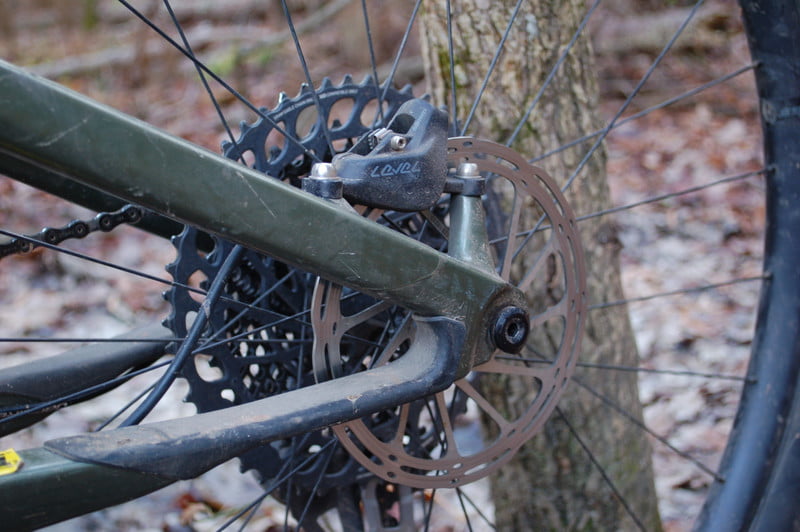
The Scalpel SE LTD Lefty is Cannondale’s highest-spec (and highest-priced) trail bike, and its premium components follow suit with the rest of the bike’s XC/trail split personality.
Its drivetrain is built from some of the best SRAM components on the market, with X01 Eagle shifters mated to the same derailleur and a 12-speed 10-52 rear cassette. Cranks are SRAM’s superlight STYLO Carbon DUB, which are specced in their largest 34T chainring option.
Braking duty is handled by a pair of SRAM Level TLM units, which are mated to a 180mm Centerline rotor up front and a 160mm disk out back.
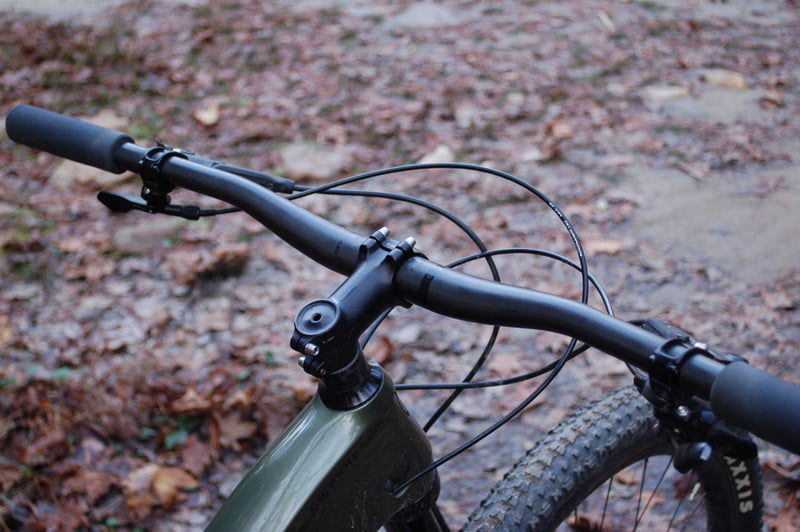
The rest of the kit is rounded out with Cannondale’s own selection of lightweight carbon components, including a 780mm carbon bar and HollowGram carbon wheels. All sizes of the Scalpel SE LTD come with Cannondale’s DownLow dropper post as well, and the 125mm unit that came on our size L was the perfect height for our 6’1″ tester.
Last but not least, the Scalpel specs Maxxis tires front and rear, with a 2.4-inch Ardent Race upfront and 2.35 Recon Race in the back.
Our Take on the Cannondale Scalpel SE Ltd Bike
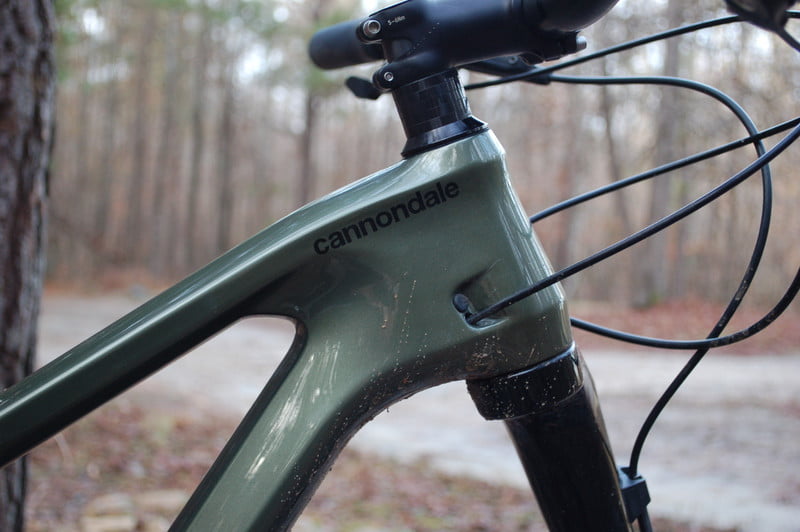
We’ll save you the specifics of the Scalpel SE LTD’s geometry save to say that it’s about what you’d expect from a down country bike with a proper XC bias and exactly what you want if you plan on using the Scalpel as intended.
If you want a flat-out trail bike, you’ve got no shortage of options that are a few mm longer and a few degrees slacker than the Scalpel, but that’s not what the Scalpel SE LTD is here for. If you’ve got any misgivings about what the Scalpel came to do, one lap on your local trails is all it takes to get the picture.
This is one of the fastest rolling, fastest climbing, mile-munching full-suspension mountain bikes we’ve ever ridden.
On the uphills, the Scalpel’s light frame and balanced geometry make for an exceptionally easy and efficient bike to pedal. Even though much of our testing was done in the damp and slippery conditions of a Georgia fall, climbing even the toughest, most technical ascents felt like cheating. It’s not quite on par with piloting an eBike up a hill, but we were repeatedly reminded of the same feeling: “Is this all the work I have to do?”
In fact, we attacked most of the climbs on our favorite trails a gear or two higher than we normally would, and in the rare event we were forced to shift down onto the Scalpel’s largest 52-tooth cog, the progress was slow-moving but comparatively effortless, like being towed up the hill by a small diesel tractor.
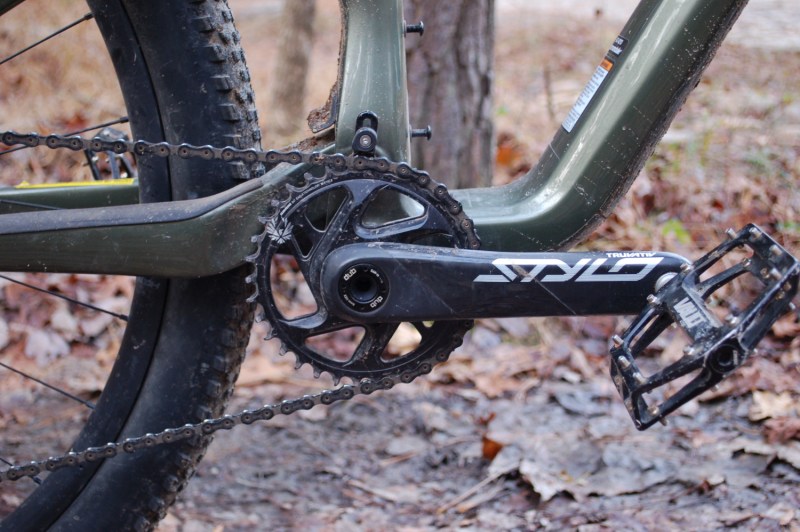
When the hills flattened out, the Scalpel SE LTD really shined. That extra 20mm of suspension makes a huge difference, and both the Lefty fork and Rockshox shock were firm and supportive and loved blasting through flowing singletrack and springing off whatever features we could find. The brakes did a great job of keeping us in check, which is good because this bike wants to go FAST. There’s definitely a noticeable difference between the power of the front and rear brakes, and we wouldn’t mind seeing a matching 180mm rotor in the rear, but the SRAM Level binders never failed to get us out of a tight spot when we got a little too confident.
When it came time to point the Scalpel downhill, we were once again impressed by just how much performance Cannondale managed to squeeze out of 120mm of travel. Granted, this isn’t the kind of bike you just take plowing through rock gardens, and on larger drops and bigger hits you’ll definitely feel the limits of the suspension, but it never felt completely overwhelmed either. The Scalpel rewards smart line choice, and thanks to its extremely sharp handling is more than capable of putting you right where you want to be on the trail.
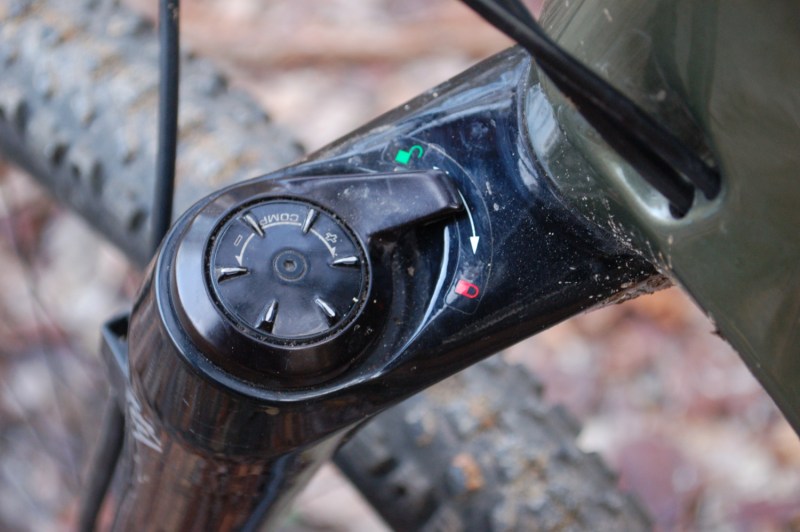
Honestly, complaints here are few and far between. Cannondale did an excellent job engineering a bike with perks XC fans and road-weenies will love, but they didn’t skimp on the trail bike essentials either. In fact, it’s only when comparing the Scalpel to dedicated trail bikes that we find a few improvements we’d be making if we added one to our long-term test fleet.
For instance, the combination of Maxxis tires that comes on the Scalpel isn’t the best for faster downhill cornering. We found the limits of the front’s side knobs in short order, and while they’re progressive and predictable, we know we could push the bike harder into corners with something a bit more aggressive. Of course, that’s a quick and easy fix should you be inclined to do so, and riders who want to keep rolling resistance to a minimum might feel differently.
Similarly, the bike’s balanced geometry means the steering feels a bit more anxious as the speed picks up downhill, but were it any longer or slacker we’d lose the character that makes the Scalpel so enjoyable on the climbs and fast on flat sections.
Who Is The Cannondale Scalpel SE LTD For?
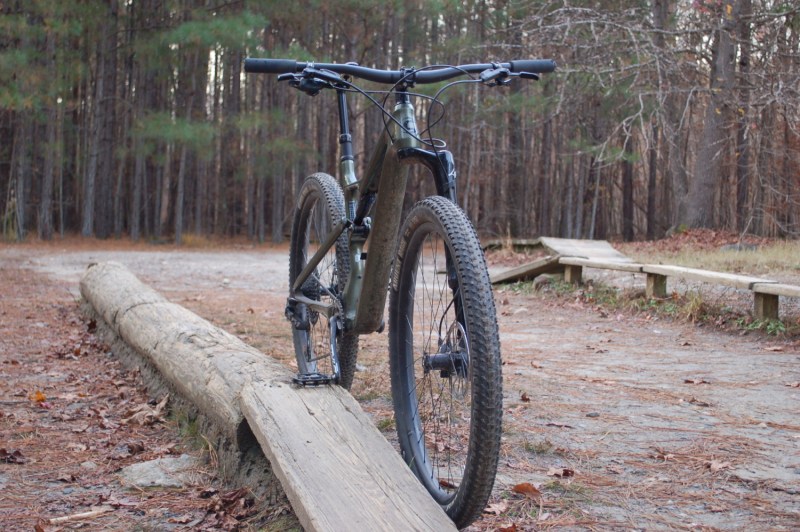
In a market where just about every bike leans further and further into the “longer, slacker” genre each year, the Cannondale Scalpel SE LTD sticks to its XC roots. Here is a bike you can absolutely take racing when you want to, but also take anywhere shy of a downhill course when you don’t.
This Scalpel is the perfect ride for anyone who wants to put long miles in the saddle both uphill and down. It’s not scared to hit the places dedicated XC bikes fear, nor is it shy about attacking those aptly named stretches like “Cardiac Hill.”
Should You Buy the Cannondale Scalpel SE LTD?
The Cannondale Scalpel SE LTD is for anyone who just loves to get out and ride and wants an imminently capable bike that can take them wherever they want to explore. At $8,300 MSRP, it’s every bit as expensive as some of the most hardcore, feather-light XC racers out there, but it’ll take you places they prefer not to go and has the perfect amount of premium suspension underneath it to make every ride as comfortable as it is enjoyable.




